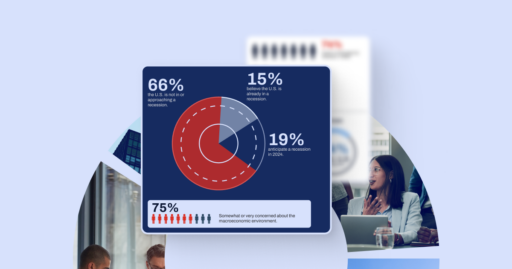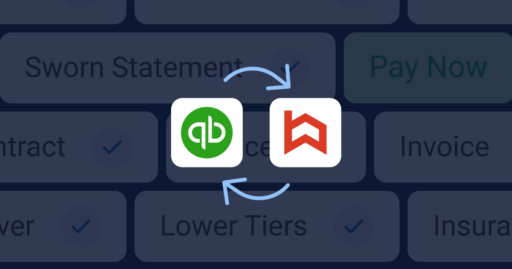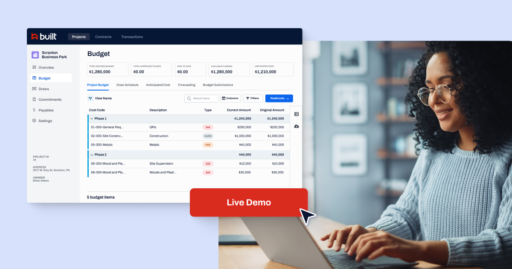Using CRE Software to Unveil Portfolio Risks in the ‘Flight to Quality’ Era


The “flight to quality,” or the push for safer real estate assets, is upon us. For commercial real estate (CRE) lenders and others in the market, this means it’s key to highlight—and mitigate—portfolio risks.
Flight to quality, often referred to as “flight to safety,” is akin to stock market investors’ tendency to sell off high-risk stocks and reinvest in blue chip assets during an economic downturn. Considering the CRE flight to quality, can commercial real estate software for investors highlight those risks and help smooth the bumps in CRE underwriting, origination, asset management, and other processes? The answer: Yes, as long as you choose the right technology and use it to leverage the expertise of your workforce.
Where stress lives in the commercial real estate industry in 2023
Spoiler alert: It’s not just office spaces that are feeling the squeeze.
Lindsey Wright, Managing Director and Head of Investment Services at KKR, has 25 years of experience in collateralized commercial mortgage-backed securities. She sees firsthand the stressors hitting CRE.
While asset valuations are down as interest rates rise, Wright says there’s a lag. Quarterly reporting is behind simply because “there haven’t been many transactions in recent months,” she states. As more of those trades occur, valuations will condense further.
“Everybody’s talking about the office market,” Wright adds, pointing out that Class B and C assets are the first to go, but even large, institutional owners are feeling the pain. According to a report from JLL Research, 56% of corporations consider hybrid work models to be a top priority between now and 2025. “Aligning spaces, technology, and HR policies will be imperative to operationalizing hybrid,” the report writes, hence the stress on the office building market.
However, offices aren’t the only area of focus. Others include retail, which “continues to struggle in certain sectors but has also been resilient in other ways,” Wright says, excluding regional malls from that assessment.
Then there’s commercial multi-family real estate, especially older Class B and C units which require bigger infusions of capital to rehabilitate. “No one’s really talking about pain in the multi-family market,” says Wright.
In 2022, multi-family construction increased by 15% year over year, but those starts are expected to fall 28% in 2023, according to the National Association of Home Builders (NAHB).
It’s not just new builds, either. Riley Thomas, SVP of Revenue for Built Technologies, says about existing multi-family properties, “There may be hesitancy to revamp some of these older buildings simply because of the unknown cost and some of the challenges that go with that.”
With these risks in mind, where do CRE lenders stand?
Mitigating risk: Areas of analysis in the deal management process & beyond
It’s essential to be proactive and detailed in your portfolio analyses, says Wright. At KKR, analysts are running a number of scenarios to ensure they’re appropriately calibrating for these stress pockets.
That’s what led to the launch of a huge re-underwriting process at KKR last year, as well as increased focus on covenant tracking at the loan level. For example, Wright asks, “If a tenant went dark or is subleasing, can you trip reserves?”
Wright’s team is also focusing heavily on rent rolls. That includes looking at the rollover, tenant mix, co-tenancy clauses, go-dark provisions, or anything that can be a “gotcha,” as Wright puts it. No surprises here.
Real estate reporting software and human expertise go hand in hand
For K-Star, the dedicated services management platform at KKR, one of the cornerstones of the business plans is to hire experienced real estate professionals and pair them with really great and robust technology.
That means using real estate investment management software to leverage the expertise of your workforce, not the other way around.

The addition of software shouldn’t add more data management roles but rather create more efficiencies. That way, “You can focus on hiring skilled asset managers,” says Wright. These professionals are the ones who decide how to take action on data, which—in an ideal world—the deal management software (or whatever technology you’re using) provides.
Fact: In the commercial real estate space, 43% plan to invest more in data and analytics to enable real-time decision-making, according to JLL research.
“Transparency’s a big thing for us—and we get that through the reporting,” Wright adds. Asset managers are taking action by looking to see what they think the problems are, focusing on the highest risk-rated deals, then entering into dialogue as necessary if there’s a consent or workout that needs to take place. The process is highly collaborative.
The use of enhanced data and smart analytics is becoming ever-increasingly important in the CRE industry, providing insights into market trends, consumer preferences, and property performance and helping professionals make more informed decisions.
Ryan McKenzie, Vice President at Kidder Mathews, on trends and opportunities in CRE
Commercial real estate tech as a “working tool”
CRE investment management software should fit into the existing workflow of lenders and other CRE professionals. Wright sees the asset managers on her team using software as a working tool for day-to-day operations.
“We’re also focused on helping asset managers who deal in transitional and construction loans to manage business plan tracking and monitor those benchmarks, thresholds, and reserves,” Wright adds. “All of that is a daily activity that we want to be done in a system.”
Since we’re talking about an industry that loves Microsoft Office, particularly Excel, it’s only natural that any software needs to be compatible with these existing systems.
Let’s take a look at Built for Deal Management, for example. Commercial lenders often have to deal with siloed deal data. However, users can optimize their work with Built software by centralizing all of their investment data in the cloud without disrupting existing workflow. This can lead to increased operational efficiencies, risk mitigation, ROI maximization, and—perhaps most important in a flight-to-quality environment— investment decision optimization.
As you demo different commercial real estate deal management software products, consider whether the technology is harmonious with Excel and the broader Microsoft Office suite, leverages your professional workforce, eases into your natural workflow, and provides you the opportunity to proactively increase transparency and uncover portfolio risks.
Combined with the right decision makers, the right CRE software can help you weather any economic storm.







